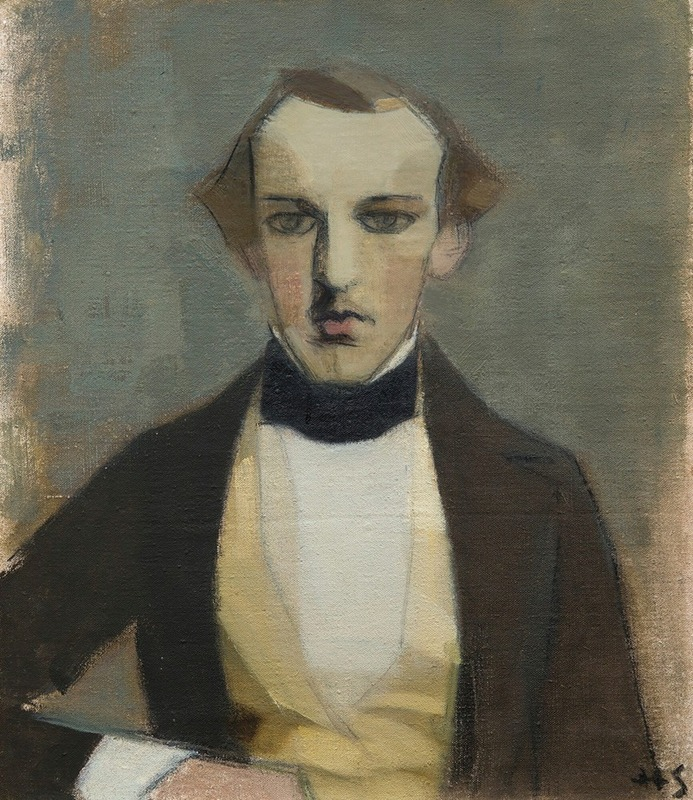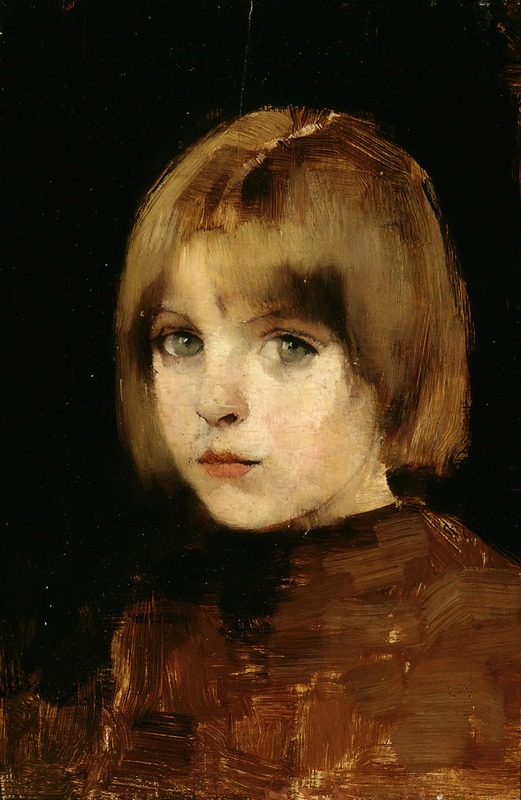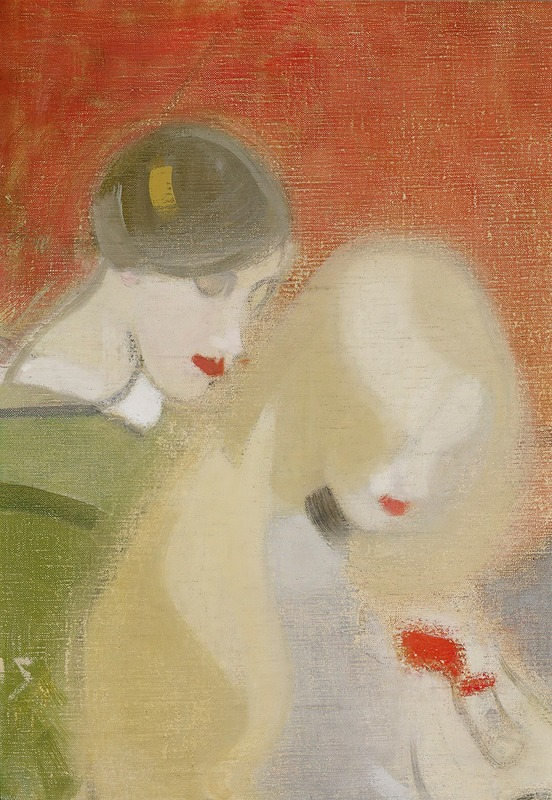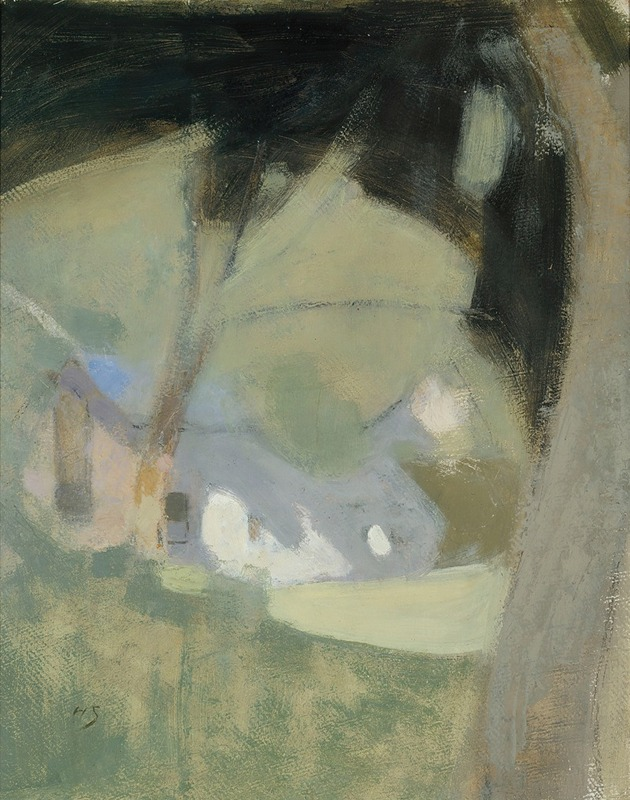
All About Helene Schjerfbeck: The Finnish Painter with an Ever-Evolving Artistic Style
Summary
Reflection Questions
Journal Prompt
From her beginnings at the Finnish Art Society to her later years as a recluse, Helene Schjerfbeck carved a distinct niche in 19th-century European painting with her profound and continually evolving artistic style. Celebrated for her unique approach that traversed from detailed naturalism to captivating modernist abstractions, Schjerfbeck’s work offers a compelling narrative of artistic evolution. Her significant contributions to the art world, marked by a deeply introspective and personal portrayal of her subjects, especially in her later years, firmly establish her as a pivotal figure in the transition from traditional to modern art forms. In this article, we will take a look at the many nuances of Schjerfbeck’s artistic journey, shedding light on her enduring influence and the indelible mark she left on the landscape of art history.
Early Life and Training

Helena Sofia Schjerfbeck was born in 1862 in Helsinki, Finland, a setting that significantly influenced her early exposure to art. Her childhood was marked by both opportunity and challenge; she demonstrated artistic talent at a young age, but her pursuits were tempered by personal hardship, including a severe hip injury that limited her mobility.
This early adversity, however, also afforded Schjerfbeck ample time to develop her artistic skills, as she often turned to drawing and painting during her convalescence. The cultural atmosphere of Helsinki, coupled with her family’s support, nurtured her burgeoning interest in art and set the foundation for her future career.
The Influence of Her Parents on Schjerfbeck’s Artistic Journey

Helene Schjerfbeck had a close relationship with her parents, particularly her mother, Olga Johanna Schjerfbeck. Her father, Svante Schjerfbeck, was a Swedish-born office manager who passed away when Helene was relatively young, leaving a significant impact on her life.
Helene’s mother played a crucial role in her life and career. After Schjerfbeck’s father died, her mother became an even more central figure, providing emotional and practical support. Olga Johanna was known to have been a strong and supportive presence, encouraging Helene in her artistic pursuits.
The bond between Helene and her mother was not just familial but also professional in some aspects. Her mother often acted as her model for various paintings, and her presence was a source of comfort and stability for Helene.
The death of her father brought financial difficulties to the family, which influenced Helene’s career choices. These challenges likely contributed to her determination and resilience in pursuing a career in art, a field that was not easy for women to succeed in during that time.
Following her father’s death, Helene continued her art education, which was essential for her professional development. Her early works during this period began to gain attention, marking the start of her journey in the art world. The responsibility of contributing to the family’s finances may have also influenced the subjects and nature of her work, as she sought to create art that was not only personally fulfilling but also marketable.
Detailing Her Early Artistic Training and Influences

Schjerfbeck’s formal artistic training commenced when she was remarkably young, beginning at the Finnish Art Society drawing school in Helsinki. At the Finnish Art Society school, Schjerfbeck received a traditional education in art, honing her skills in drawing and painting under the guidance of various instructors.
This period was crucial in shaping her technical abilities and understanding of artistic principles. Her education was further enriched by exposure to various artistic styles and influences, particularly through the works of Finnish and European artists. The classical approach to art, emphasizing realism and attention to detail, played a significant role in her early stylistic development.
Discussion of Her Initial Foray into Art and Early Recognition

From an early age, Schjerfbeck’s talent was evident and garnered attention. Her proficiency and distinct style led to early recognition in the Finnish art community. Notably, one of her paintings was exhibited at the Finnish Art Society’s annual exhibition when she was just 15, marking a significant milestone in her budding career. From still lifes to portraiture, her work was later featured in a number of the Art Society’s exhibitions while she was attending school there.
This early acclaim was not only a testament to her skill but also provided a boost to her confidence and ambition as a young artist. These formative experiences laid the groundwork for her subsequent artistic endeavors and set her on the path to becoming one of Finland’s most esteemed painters after Schjerfbeck graduated from the school.
Artistic Style and Evolution

In the early stages of her career, Helene Schjerfbeck’s artistic style was predominantly naturalistic and academic. This period was characterized by a strong emphasis on realism, where she meticulously captured the details and subtleties of her subjects. Initially, the works that Schjerfbeck painted displayed a keen observation of the physical world, reflecting a deep engagement with the classical traditions of European art.
Schjerfbeck’s paintings from this era often featured clear, defined forms and a balanced composition, typical of academic art. The influence of her formal training was evident in her precise drawing skills and her ability to render subjects with a high degree of fidelity to their real-life appearances.
Exploration of How Her Style Transformed

As Schjerfbeck’s career progressed, her style underwent a significant transformation, showing influences from Impressionism and Post-Impressionism. This shift was marked by a looser brushwork, a brighter palette, and a greater focus on light and its effects. Influenced by these contemporary artistic movements, her work began to move away from strict realism towards a more subjective representation of reality.
The change was gradual, with her paintings starting to exhibit the characteristic spontaneity and vibrancy of Impressionist art. This evolution in her style reflected not only the broader changes occurring in the art world at the time but also her personal artistic exploration and growth.
Examination of Her Later Work

In her later years, Schjerfbeck’s work exhibited a further shift towards modernism and abstraction. Her later paintings are noted for their simplified forms, reduced details, and an increasingly abstract approach. This period saw her experimenting with composition and color, using them to convey emotion and atmosphere rather than to depict subjects realistically.
It was during this period Schjerfbeck created portraits that demonstrate a remarkable economy of line and color, focusing on capturing the essence of the subject rather than detailed likenesses. This late style is often seen as a precursor to the modernist movements that would dominate the 20th century, showcasing Schjerfbeck’s forward-thinking approach and her willingness to break from convention in pursuit of artistic expression.
Notable Works and Recurring Themes

Helene Schjerfbeck’s oeuvre is marked by several significant works that have cemented her legacy in the art world. Among these, her self-portraits hold a special place, offering a window into her introspective journey and artistic evolution. These self-portraits, created throughout her life, chronicle not just her aging process but also the stylistic transitions in her art, moving from detailed realism to a more stripped-down, abstract approach.
Another notable work, “The Convalescent,” painted in 1888, captures a child recuperating from illness. This painting, which won a state prize, is celebrated for its tender portrayal of vulnerability and recovery, showcasing Schjerfbeck’s skill in capturing the nuances of human emotion.
Analysis of the Themes Present in Her Work

Schjerfbeck’s body of work is replete with themes that delve into the depths of human experience. A recurring theme is introspection, where her subjects, often depicted in solitary settings, seem immersed in their inner worlds. This introspective quality is particularly evident in her self-portraits. The theme of aging is another prominent aspect of her work, approached with a frankness that was unusual for her time.
Her self-portraits, documenting her own physical changes over the years, reflect a contemplative engagement with the passage of time. Moreover, her works frequently explore broader aspects of the human experience, such as vulnerability, resilience, and the complexities of the human psyche.
Exploration of Her Portrayal of Female Subjects and Its Impact

Schjerfbeck’s portrayal of female subjects is noteworthy, both for its frequency and for its depth. Her female subjects are often depicted with a sense of strength and introspection, challenging the traditional representations of women in art.
These portrayals range from young girls in moments of innocence to elderly women exuding a sense of lived experience and resilience. Her treatment of female subjects is characterized by a nuanced understanding of their inner lives and personalities, rather than focusing solely on their external beauty.
This approach not only reflects Schjerfbeck’s own experiences as a woman but also contributes to a broader dialogue about the representation of women in art. Her portrayals have been influential in shaping how female subjects are perceived and depicted, adding a rich and complex narrative to the portrayal of women in the visual arts.
Schjerfbeck’s Life in Art

Helene Schjerfbeck’s personal life was deeply intertwined with her artistic journey. Her childhood experiences, particularly her prolonged illness and recovery, played a significant role in her early gravitation towards art as a form of expression and solace.
Throughout her life, Schjerfbeck maintained a close relationship with her mother. Schjerfbeck’s mother was a supportive figure in her artistic endeavors and often Schjerfbeck’s sole contact with the outside world. Her personal experiences, including her struggles with illness and solitude, profoundly influenced her artistic themes and stylistic choices.
Schjerfbeck’s art was a reflection of her life, with her self-portraits serving as a visual diary that chronicled her emotional and physical states over the years. This intimate connection between her life experiences and her art resulted in works that were deeply personal, introspective, and emotionally resonant.
The Impact of Her Secluded Lifestyle on Her Artistic Output and Recognition

Schjerfbeck led a relatively secluded life, especially in her later years. This reclusiveness was partly due to her health issues and partly a personal choice. Regardless, Schjerfbeck continued to paint portraits, landscapes, and still lifes that were celebrated by the Finnish art community. While this lifestyle limited her direct engagement with the broader art world, it allowed her a certain freedom in her artistic exploration, uninhibited by external trends or opinions.
During the summer, Schjerfbeck spent time in various rural locations outside of Helsinki, Finland. These retreats provided her with inspiration and a respite from city life. One of her most notable and frequent summer retreats was to the town of Hyvinkää, located about 50 kilometers north of Helsinki. The tranquil and scenic surroundings of Hyvinkää offered Schjerfbeck a peaceful environment conducive to her artistic work.
In Hyvinkää, Schjerfbeck moved to Luova House, which became one of her favorite places. The natural beauty of the area, the changing seasons, and the local people provided her with ample subjects for her paintings. These rural landscapes and the quiet, simple life of the countryside had a significant influence on her work, contributing to the introspective and serene quality of her paintings during these periods.
These summer retreats were crucial for Schjerfbeck not just for artistic inspiration but also for her health and wellbeing. Being away from the city allowed her to relax and focus on her painting in a serene environment, which was beneficial given her lifelong health challenges. The time she spent in these rural settings played an important role in her artistic process and in maintaining her overall health.
This seclusion contributed to the introspective quality of her work, with a focus on themes of solitude and introspection. However, it also meant that her work was not widely recognized or appreciated outside of Finland during her lifetime. It wasn’t until after her death that her art gained significant international attention and acclaim.
Her Contributions and Status within the Finnish Art Community

In the Finnish art community, Helene Schjerfbeck held a respected and influential position. Despite her physical distance from the art hubs of Helsinki, her work was well-known and admired by Finnish art circles. Her contributions to Finnish art were significant, particularly in terms of her unique approach to painting and her exploration of modernist themes.
Schjerfbeck was a trailblazer in incorporating modernist techniques and ideas into Finnish art, and her work played a crucial role in the development of modern art in Finland. Her legacy in the Finnish art community is seen in the continued admiration and study of her work, and she remains one of Finland’s most celebrated artists.
Schjerfbeck’s Relationship with Gösta Stenman

Helene Schjerfbeck’s relationship with the art dealer Gösta Stenman played a crucial role in her career, especially in her later years. Stenman, a prominent figure in the Finnish art scene, was instrumental in promoting Schjerfbeck’s work and solidifying her status as a leading artist in Finland.
Gösta Stenman was instrumental in promoting Schjerfbeck’s art. He organized numerous exhibitions that introduced her work to a wider audience. Stenman’s galleries in Helsinki and Stockholm held regular exhibitions of Schjerfbeck’s paintings, significantly boosting her visibility and reputation.
Stenman’s support provided Schjerfbeck with much-needed financial stability. He bought her paintings outright, allowing her a regular income. This financial security was particularly important for Schjerfbeck in her later years, enabling her to focus on her artistic work without the pressure of immediate sales. Stenman also played a role in bringing Schjerfbeck’s work to the international art market. His efforts helped raise her profile outside of Finland, contributing to the posthumous international recognition she received.
The relationship between Schjerfbeck and Stenman was not only professional but also had a personal dimension. Stenman was a great admirer of Schjerfbeck’s work, and there was a mutual respect between the artist and the dealer. This relationship was based on trust and a shared vision for the importance of Schjerfbeck’s art. Stenman’s dedication to Schjerfbeck’s work had a lasting impact on her legacy. By ensuring her work was regularly exhibited and sold, he helped establish Schjerfbeck as a significant figure in Finnish art history.
International Recognition and Legacy

Helene Schjerfbeck was a respected figure in the Finnish art scene during her lifetime and exhibitions did bring her work to Sweden. Schjerfbeck won many awards and was afforded more than one solo exhibition despite her reclusiveness. However, it was not until after her death that her work gained broader international recognition. The posthumous growth of her reputation can be attributed to a greater global interest in exploring diverse narratives in art history, including those of women artists and artists from less-represented regions.
Schjerfbeck’s unique style, which bridged traditional and modernist elements, resonated with broader art movements and trends, making her work increasingly relevant to international audiences. Her ability to convey deep emotional and psychological depth in her paintings, particularly in her self-portraits, has garnered attention and admiration from art historians, critics, and art enthusiasts worldwide.
Key Exhibitions and Retrospectives Highlighting Her Work

Several key exhibitions and retrospectives have played a significant role in enhancing Schjerfbeck’s international stature. Major retrospectives in prominent galleries and museums across Europe and North America have introduced her work to a wider audience.
These exhibitions have often focused on the breadth of her career, showcasing her evolution from a naturalistic style to her more abstract, modernist approach in her later years. The retrospectives have been instrumental in highlighting her contribution to modern art and in reevaluating her position within the broader context of European art history.
Analysis of Her Enduring Legacy and Influence in Modern Art

Helene Schjerfbeck’s legacy in modern art is multifaceted. Her influence can be seen in the way she navigated and merged different artistic styles, blending realism with modernist abstraction. Her introspective approach to painting, particularly in her self-portraits, has been influential in demonstrating the power of art as a medium for personal expression.
Schjerfbeck’s work has also contributed to the narrative of female artists in art history, offering an important perspective that challenges traditional gender roles in the art world. Today, her work continues to inspire artists and is studied for its unique approach to portraying the human condition, making her an enduring figure in the history of modern art.
Final Thoughts on Helene Schjerfbeck and Her Influence on Finnish Art society

Helene Schjerfbeck’s artistic journey, marked by a continuous evolution of style, exemplifies a lifelong commitment to artistic growth and exploration. From her early naturalistic renderings to her later abstract and modernist works, Schjerfbeck’s career reflects a unique trajectory in the art world.
As a Finnish artist, her ability to navigate and incorporate various artistic movements into her work sets her apart and highlights her adaptability and foresight in the realm of visual arts. Schjerfbeck’s legacy extends beyond her national identity, positioning her as a significant figure in the broader narrative of modern art.
Her work, characterized by introspective depth and a willingness to explore new forms of expression, continues to inspire artists and art enthusiasts alike. Schjerfbeck’s impact lies not only in her artistic achievements but also in her role as a beacon for evolving artistic expression and the introspective exploration of the human experience through art.








